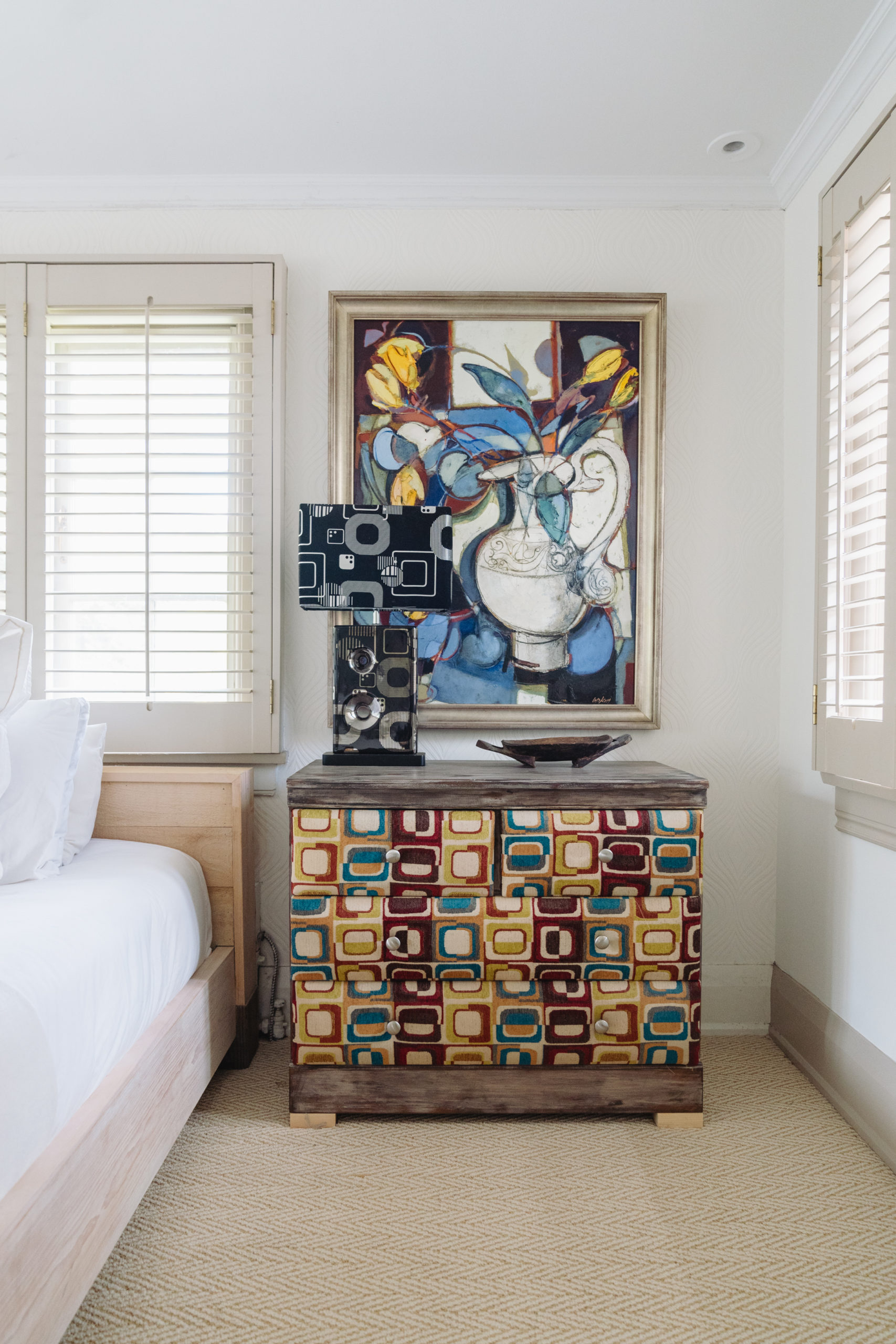This artist’s Forest Hill home is filled with handmade mid-century modern miniatures
Including a diminutive Roche Bobois sofa, a George Nakashima chair and Frank Gehry–inspired pieces

In 2018, Hilary Lipkin watched with a heavy heart as city workers chopped down three elms in the garden of her Forest Hill home. The diseased trees needed to go, but bits of them live on in Lipkin’s living room, including in a tiny rocking chair that she whittled out of one of the stumps.
“I’ve always been a wood freak,” says Lipkin, an artist and speech pathologist who is originally from Johannesburg, South Africa. She immigrated to Toronto in 2001 with her husband, Mike, a motivational speaker, their daughters, Carla and Dani, and son, Anthony. The family, along with their two dogs, Holly and Tootsie, live on a leafy street in a 4,000-square-foot century home with original wainscoting and shutters.

“I have nothing sophisticated in my house,” Lipkin says. Instead of buying new items, she opts to reupholster, strip and remake furniture. She gave the chaise in her bedroom a new life in brown crushed velvet after a dog accident—even though she’d never reupholstered anything in her life. She also turned tree stumps into colourful side tables by painting the tops pale blue and adding wheels.
Lipkin takes the same approach in her professional work. In September of 2019, after a career making metal art pieces (like sandblasted kettles and baby buckets for toys) that were sold in shops in South Africa, Lipkin started making miniature mid-century modern furniture—or “vignettes,” as she calls them—using only rudimentary tools: a ruler, a pencil, paint, glue, a Japanese saw gifted by her son-in-law and sometimes a hand grinder. “We couldn’t travel during the pandemic, so I made travel come to me,” she says. “Making these pieces made me feel like I’d been transported to a beautiful hotel foyer in Italy or Greece.”
Lipkin makes her miniatures from scraps, including cardboard, wood, felt, cotton, foam, paper and carpet. “If I see a tin that’s been run over by a vehicle, I’ll take it home,” she says. She’s used elastics from discarded Covid masks, old wine boxes and a kids’ toy. “My whole art practice is driven by never buying anything, because there’s so much around that can be transformed,” she says.
To make her miniatures, Lipkin analyzes a life-size piece of furniture and makes a template out of cardboard, then wood. It takes her about a week to finish a piece, working on it for two or three hours every day. “When I finish a vignette, I feel like I have to decompress,” she says. “I’m very passionate about it—I love furniture and design.”
So far, Lipkin has made over 100 pieces, including a miniature Pierre Jeanneret chair, no bigger than a walnut and covered in a faux cow print that she snipped out of a carpet in her home (she tucked the missing piece under the bed so it wouldn’t be noticeable); a toothpick-length Adrian Pearsall platform sofa complete with a working drawer; and a George Nakashima chair made with clinical precision so that the incline of the back is just right.
She assembles the parts on her kitchen counter or, when the project is messier, in the garage. To bring a piece to life, she’ll create a scene around it with accompanying Lilliputian accessories: curtains, wallpaper, rugs, clocks, a wired lamp with a working swing arm and a vase filled with real flowers.
Still, Lipkin maintains that she’s not a dollhouse-furniture person. “I’m a model maker of classics,” she says, and she displays them artfully throughout her home. She exhibits some pieces on shelves, like sculptures, and puts others on a coffee table or her kitchen counter, where miniature Roche Bobois and Missoni miniatures are currently displayed on a lazy Susan.
It took Lipkin six weeks to make this modular Roche Bobois sofa, which can be reconfigured. The toile de Jouy fabric on the cushions was made from scraps gifted by a friend who works at Paris’s Musée de la Toile de Jouy.

This piece inspired by Frank Gehry’s Little Beaver chair is one of Lipkin’s first miniatures. The back and seat are made out of one piece of elm wood.

Lipkin created this Pierre Jeanneret lounge suite after being inspired by a visit to the Galerie Patrick Seguin in Paris. It features bouclé chairs, a lamp fashioned from half a ping-pong ball and birds on a log made from the chopped-down elm in her garden.

Many of Lipkin’s early pieces are on display on these shelves in her living room, including a miniature replica of George Nelson’s famous Marshmallow sofa with Smarties-size seats.

Last year, Lipkin made a stack of 40 chairs using matches and cardboard as a 40th wedding anniversary gift for Mike.

Lipkin made these two rugs by cutting up an old blanket. She then painted them with a Japanese-inspired design to pair with the George Nakashima pieces.

Some of Lipkin’s miniature chairs are displayed in her kitchen. Black elastic strips from a Covid mask were used to make the details on the colourful licorice allsorts–inspired pieces.

The daybed, stool and chair are made from corrugated cardboard that Lipkin found while she was out walking her dogs.

Here’s Lipkin’s tiny version of Adrian Pearsall’s classic Gondola sofa.

“People are big on 3D-printing, but I’m an old-school woodworker,” says Lipkin. Here, she’s used olive wood from Israel to create a miniature counter and stools.

Lipkin’s craftiness extends to the rest of her home. She stained this old pine dresser and upholstered the front in an earthy fabric. The painting is by Mike’s mother, Aileen Lipkin, who was a prominent South African artist.

Lipkin’s bedroom is a diverse mishmash of found and homemade items. Lipkin’s daughter, Carla, made the painting on the wall, and Lipkin found the vanity, which is made in France, on the sidewalk and fixed the legs. She also made the hat stand. The mirror and animal-print chair were cast-offs from a friend who was moving.






